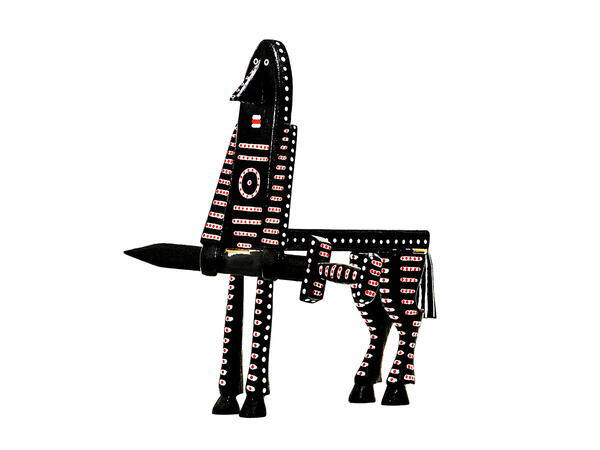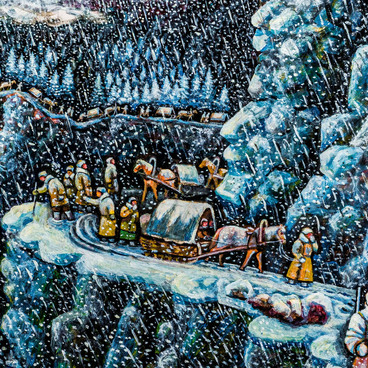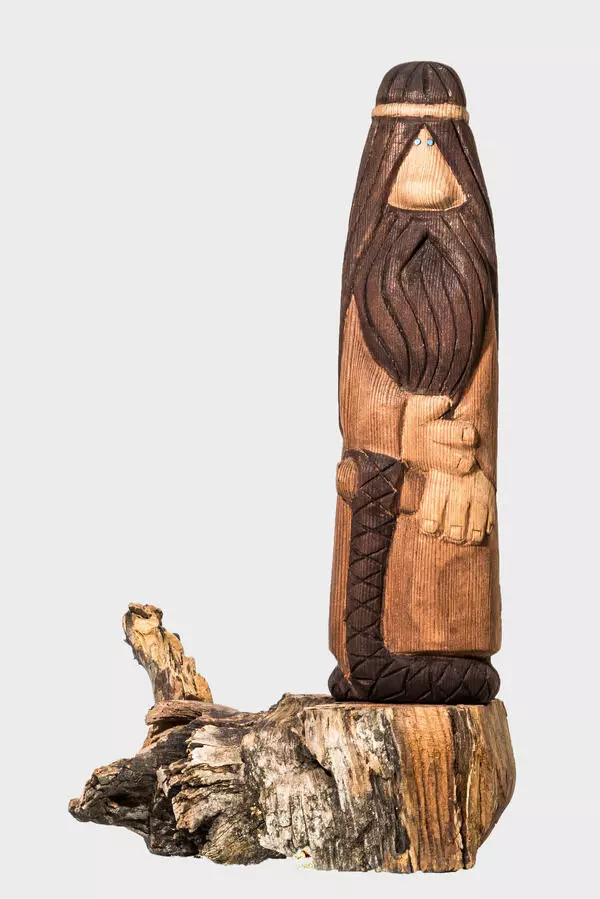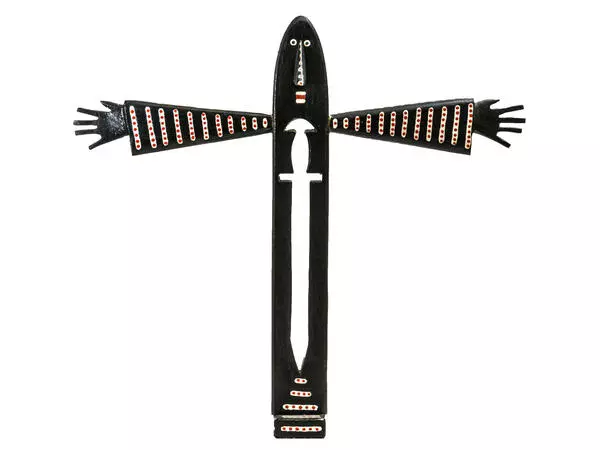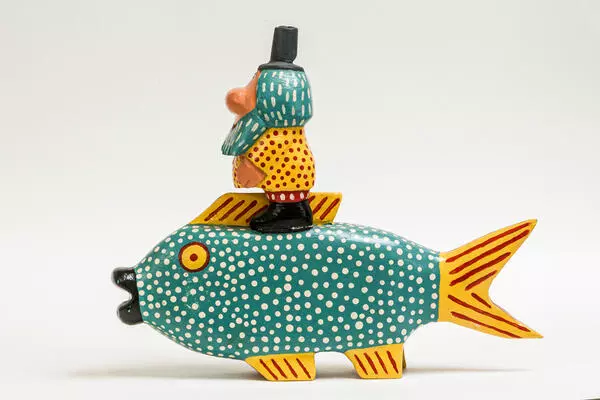Mythmaking has become one of the features of naive and amateur art. Self-taught artists, trying to implement their worldview, often create their own myth — a narrative that determines the person’s place in the world and tells about it.
Mythmaking includes the images of family and home, the history of ancestors and their beliefs, the images of holidays, and everyday scenes. In naive art, myths are partly born due to the collective unconscious and its archetypes. They are innate ideas and memories that encourage people to experience certain events in the same way.
Being involved in creative work, the naive artist turns to his own mythology and ancestral memory. In his works, the artist reflects his relations with the surrounding world.
Such mythology was created by the self-taught sculptor from the Urals Nikolai Zykov, a graduate of the History Faculty of the Ural State University. He implemented many archetypal images in wooden and ceramic sculpture.
The master created the wooden figure “Polkan” in 1998. It refers to Russian folklore and the cheap popular art print of the 16th — early 20th centuries called “lubok”. “Lubok” was the name for a type of graphics with captions. It contained simple images that a common viewer could easily understand.
The character “Polkan the Warrior” appeared in the “Tale of Bova Korolevich” of the 16th century. It was a half-man, half-dog, with supernatural strength and speed. For example, he could use an entire oak tree in a battle and overcome “seven versts in one leap”.
Some researchers attribute “Polkan” to the Cynocephali — the creatures with the body of a man and the head of a dog. Gradually, the image of “Polkan” changed, and on cheap popular prints, he was more often depicted as a centaur — a creature with a human torso on the body of a horse. This is how mass art has reconsidered the ancient mythical image.
Zykov also depicted the “Polkan the Warrior” in the form of a centaur. His image combines zoomorphic features (hooves, a tail, and horse legs) and anthropomorphic features (a human face and hands). The painted figure refers to the traditional Kargopol clay toy “Polkan”. The artists decorated such products with a geometric pattern that symbolized the strength of this hero.
Mythmaking includes the images of family and home, the history of ancestors and their beliefs, the images of holidays, and everyday scenes. In naive art, myths are partly born due to the collective unconscious and its archetypes. They are innate ideas and memories that encourage people to experience certain events in the same way.
Being involved in creative work, the naive artist turns to his own mythology and ancestral memory. In his works, the artist reflects his relations with the surrounding world.
Such mythology was created by the self-taught sculptor from the Urals Nikolai Zykov, a graduate of the History Faculty of the Ural State University. He implemented many archetypal images in wooden and ceramic sculpture.
The master created the wooden figure “Polkan” in 1998. It refers to Russian folklore and the cheap popular art print of the 16th — early 20th centuries called “lubok”. “Lubok” was the name for a type of graphics with captions. It contained simple images that a common viewer could easily understand.
The character “Polkan the Warrior” appeared in the “Tale of Bova Korolevich” of the 16th century. It was a half-man, half-dog, with supernatural strength and speed. For example, he could use an entire oak tree in a battle and overcome “seven versts in one leap”.
Some researchers attribute “Polkan” to the Cynocephali — the creatures with the body of a man and the head of a dog. Gradually, the image of “Polkan” changed, and on cheap popular prints, he was more often depicted as a centaur — a creature with a human torso on the body of a horse. This is how mass art has reconsidered the ancient mythical image.
Zykov also depicted the “Polkan the Warrior” in the form of a centaur. His image combines zoomorphic features (hooves, a tail, and horse legs) and anthropomorphic features (a human face and hands). The painted figure refers to the traditional Kargopol clay toy “Polkan”. The artists decorated such products with a geometric pattern that symbolized the strength of this hero.

